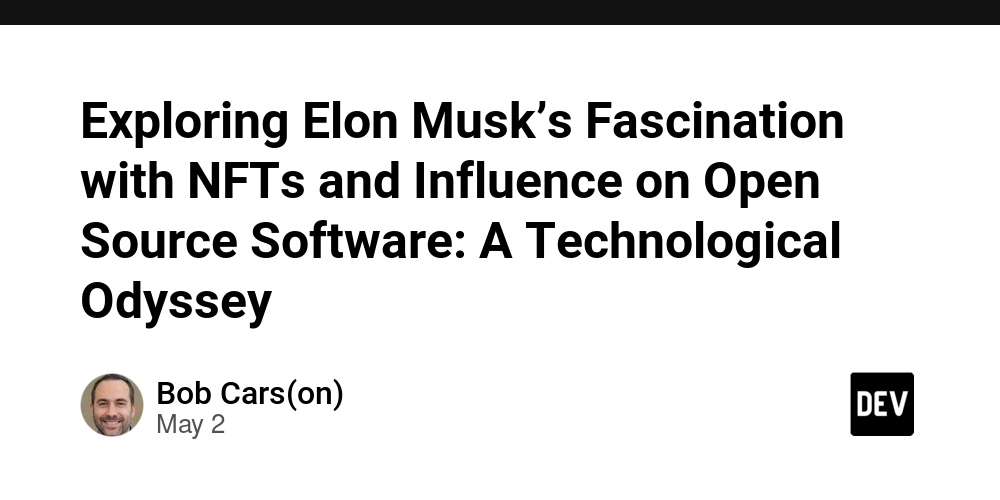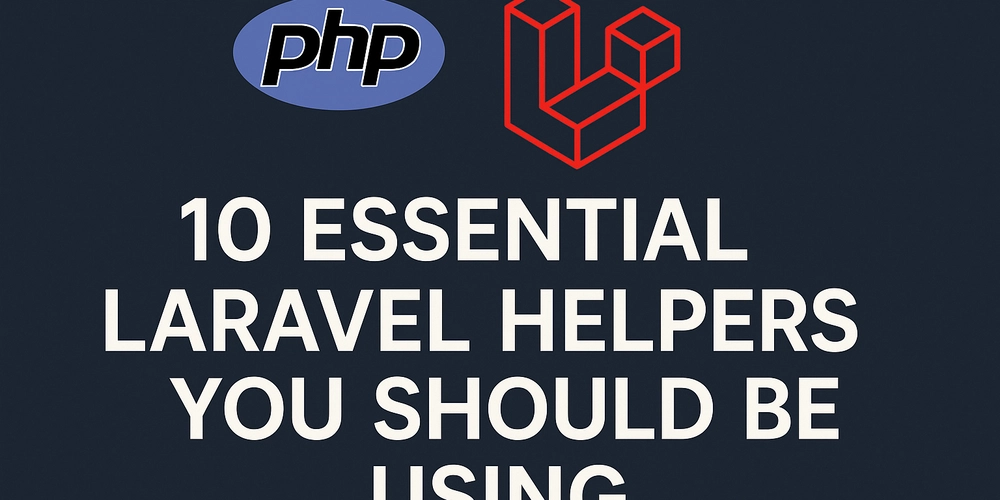Exploring Elon Musk’s Fascination with NFTs and Influence on Open Source Software: A Technological Odyssey
Abstract: This post delves into Elon Musk’s intriguing interactions with Non-Fungible Tokens (NFTs) and his impact on the open source software ecosystem. By exploring blockchain tokenization, open source licensing, and sustainable funding models through the lens of Musk’s ventures, we outline how these seemingly different fields conjoin into a vibrant, community-driven technological landscape. We highlight key concepts, real-world applications, challenges, and future trends that are shaping digital asset ownership alongside transparent software innovation. Introduction The convergence of NFTs and open source software represents a pivotal moment in the evolution of digital creation and collaboration. Over the past few years, blockchain technology and the concept of tokenization have revolutionized sectors ranging from digital art to software development. Visionaries like Elon Musk have not only contributed to the popularization of NFTs but have also championed open source practices via initiatives in Tesla, SpaceX, Neuralink, and The Boring Company. This blog post explores Musk’s unique positioning at the crossroads of these trends, shedding light on market dynamics, ethical issues, and the potential for decentralized innovation. Readers will gain insights into how leading-edge technologies and bold entrepreneurial approaches can coalesce to redefine ownership, innovation, and community engagement. Background and Context The tech world has seen radical shifts in recent years due to two major developments: the rise of NFTs and the maturation of open source software. Here is a brief overview of each: NFTs: Non-Fungible Tokens are one-of-a-kind digital assets recorded on a blockchain. Unlike cryptocurrencies such as Bitcoin, NFTs are not interchangeable due to their unique metadata and smart contract protocols. They have become the medium of choice for digital art, collectibles, and even intellectual property rights. Projects like the Zora NFT Collection and Zed Run NFT Collection illustrate the vast cultural impact of NFTs. Open Source Software: Open source software thrives on an ethos of community collaboration, transparency, and shared intellectual property. Linux, GitHub-hosted projects, and many of Elon Musk’s initiatives rely on public code repositories and community contributions to innovate rapidly and reduce costs. Open source projects are often funded through alternative models including crowdfunding and sponsorship, as detailed in discussions on sustainable funding for open source. Historically, blockchain emerged as the backbone of cryptocurrencies and later evolved to support diverse use cases such as digital art and asset management. At the same time, the open source movement has driven technological breakthroughs by encouraging transparent development and collective problem-solving. Elon Musk’s involvement in both domains demonstrates how decentralized protocols and community-driven innovation can work together to produce transformative outcomes. Core Concepts and Features Understanding how NFTs and open source intersect requires grasping their core principles. Below is an exploration of these key concepts: NFTs: Unique Blockchain-Based Assets Tokenization and Uniqueness: NFTs utilize smart contracts on platforms such as Ethereum to create unique tokens representing digital assets. The metadata and immutable transaction history verify the authenticity and provenance of each NFT. Market Dynamics and Ownership: The NFT ecosystem is characterized by its volatility, where prices fluctuate based on community sentiment, celebrity endorsements, and rare digital artworks. The concept of fractional ownership and automatic royalty payments affords new business models for creators. Interoperability and Standards: Standard protocols like ERC-721 ensure that NFTs are compatible across various platforms, enhancing liquidity and ease of trade. Open Source Software: Collaboration and Transparency Community-Driven Development: Open source projects foster innovation by allowing developers worldwide to collaborate. This communal approach promotes rapid bug fixes, continuous improvements, and a shared sense of ownership. Licensing and Ethical Standards: Licenses such as the MIT License, GNU GPL, and discussions around the downside of Apache license and why I never would use it ensure that software remains free, ethical, and transparent. Sustainable Funding and Governance: Open source communities are increasingly exploring new funding models that balance sustainability with the need for public participation. Platforms like GitHub Sponsors and initiatives for decentralized governance help maintain project integrity. Synergies between NFTs and Open Source Elon Musk’s efforts encapsulate a synergy where blockchain’s permanence meets the ethos of open software: Aspect NFTs Open Source Software Uniqueness Represent unique digi

Abstract:
This post delves into Elon Musk’s intriguing interactions with Non-Fungible Tokens (NFTs) and his impact on the open source software ecosystem. By exploring blockchain tokenization, open source licensing, and sustainable funding models through the lens of Musk’s ventures, we outline how these seemingly different fields conjoin into a vibrant, community-driven technological landscape. We highlight key concepts, real-world applications, challenges, and future trends that are shaping digital asset ownership alongside transparent software innovation.
Introduction
The convergence of NFTs and open source software represents a pivotal moment in the evolution of digital creation and collaboration. Over the past few years, blockchain technology and the concept of tokenization have revolutionized sectors ranging from digital art to software development. Visionaries like Elon Musk have not only contributed to the popularization of NFTs but have also championed open source practices via initiatives in Tesla, SpaceX, Neuralink, and The Boring Company. This blog post explores Musk’s unique positioning at the crossroads of these trends, shedding light on market dynamics, ethical issues, and the potential for decentralized innovation. Readers will gain insights into how leading-edge technologies and bold entrepreneurial approaches can coalesce to redefine ownership, innovation, and community engagement.
Background and Context
The tech world has seen radical shifts in recent years due to two major developments: the rise of NFTs and the maturation of open source software. Here is a brief overview of each:
NFTs:
Non-Fungible Tokens are one-of-a-kind digital assets recorded on a blockchain. Unlike cryptocurrencies such as Bitcoin, NFTs are not interchangeable due to their unique metadata and smart contract protocols. They have become the medium of choice for digital art, collectibles, and even intellectual property rights. Projects like the Zora NFT Collection and Zed Run NFT Collection illustrate the vast cultural impact of NFTs.Open Source Software:
Open source software thrives on an ethos of community collaboration, transparency, and shared intellectual property. Linux, GitHub-hosted projects, and many of Elon Musk’s initiatives rely on public code repositories and community contributions to innovate rapidly and reduce costs. Open source projects are often funded through alternative models including crowdfunding and sponsorship, as detailed in discussions on sustainable funding for open source.
Historically, blockchain emerged as the backbone of cryptocurrencies and later evolved to support diverse use cases such as digital art and asset management. At the same time, the open source movement has driven technological breakthroughs by encouraging transparent development and collective problem-solving. Elon Musk’s involvement in both domains demonstrates how decentralized protocols and community-driven innovation can work together to produce transformative outcomes.
Core Concepts and Features
Understanding how NFTs and open source intersect requires grasping their core principles. Below is an exploration of these key concepts:
NFTs: Unique Blockchain-Based Assets
Tokenization and Uniqueness:
NFTs utilize smart contracts on platforms such as Ethereum to create unique tokens representing digital assets. The metadata and immutable transaction history verify the authenticity and provenance of each NFT.Market Dynamics and Ownership:
The NFT ecosystem is characterized by its volatility, where prices fluctuate based on community sentiment, celebrity endorsements, and rare digital artworks. The concept of fractional ownership and automatic royalty payments affords new business models for creators.Interoperability and Standards:
Standard protocols like ERC-721 ensure that NFTs are compatible across various platforms, enhancing liquidity and ease of trade.
Open Source Software: Collaboration and Transparency
Community-Driven Development:
Open source projects foster innovation by allowing developers worldwide to collaborate. This communal approach promotes rapid bug fixes, continuous improvements, and a shared sense of ownership.Licensing and Ethical Standards:
Licenses such as the MIT License, GNU GPL, and discussions around the downside of Apache license and why I never would use it ensure that software remains free, ethical, and transparent.Sustainable Funding and Governance:
Open source communities are increasingly exploring new funding models that balance sustainability with the need for public participation. Platforms like GitHub Sponsors and initiatives for decentralized governance help maintain project integrity.
Synergies between NFTs and Open Source
Elon Musk’s efforts encapsulate a synergy where blockchain’s permanence meets the ethos of open software:
| Aspect | NFTs | Open Source Software |
|---|---|---|
| Uniqueness | Represent unique digital assets with immutable records | Each contribution is unique and under transparent licenses |
| Ownership | Blockchain-proven record of ownership | Governed by community-based intellectual property licenses |
| Transparency | Immutable ledger ensures traceability | Public repositories enable auditability and collaboration |
| Market Dynamics | Driven by digital art trends and collectible culture | Driven by community needs and ethical development frameworks |
Key Concerns and Benefits (Bullet List):
- Decentralization: Empowers communities via democratic decision-making.
- Transparency: Blockchain records and public repositories build trust.
- Interoperability: Standard protocols enable compatibility across systems.
- Sustainability: Focus on ethical practices in digital and software ecosystems.
- Innovation: Continuous improvements driven by community contributions.
These overlapping features create opportunities for novel applications that harness both the creative energy of NFTs and the collaborative spirit of open source.
Applications and Use Cases
The combined world of NFTs and open source software is leading to unique, practical applications in various industries:
1. Digital Art and Collectibles
NFTs have redefined digital art ownership allowing artists to:
- Verify Authenticity: Each NFT is accompanied by its digital signature on the blockchain.
- Monetize Creativity: Smart contracts automate royalty payments to artists.
- Foster Community Engagement: Collectors and fans interact through digital marketplaces such as those powered by Zora NFT Collection.
2. Open Source Collaboration Platforms
Open source platforms, which are critical for modern software development, have begun integrating blockchain techniques:
- Decentralized Governance Tools: Voting and decision-making systems built on blockchain improve transparency.
- Tokenized Contributions: Developers can receive NFT rewards for contributing code, blending open source ideals with tokenization.
- Sustainable Funding Models: Methods like crowdfunding and sponsorship (learn more at sustainable funding for open source) ensure projects continue to thrive.
3. Tokenization of Ownership and Intellectual Property
Musk’s innovative approach even extends to asset management:
- Fractional Ownership: Digital assets can be divided into NFT tokens, allowing broader investment.
- Immutable Asset Records: Blockchain ensures that every transaction or change in ownership is recorded permanently.
- New Business Models: Companies can experiment with tokenized assets—ranging from tokenized Tesla shares to digital collectibles that merge art with open source software features.
Challenges and Limitations
The integration of NFTs with open source technologies is not without challenges. Here are some major concerns:
-
Environmental Impact:
- High Energy Consumption: Blockchain networks, especially those using proof-of-work, have significant carbon footprints.
- Sustainability Solutions: Efforts are underway to transition to greener consensus mechanisms and reduce energy use.
-
Regulatory and Legal Uncertainties:
- Licensing Complexities: Open source licenses often spark debates, as seen in discussions about the downside of Apache license.
- Intellectual Property Issues: Tokenizing digital assets can lead to legal disputes over copyright and ownership rights.
-
Market Volatility:
- Price Fluctuations: NFT markets can be highly unpredictable, subject to speculative bubbles.
- Risk Management: Investors and developers must adopt frameworks to mitigate the risks associated with price swings.
-
Technological Integration:
- Interoperability Challenges: Combining decentralized blockchain systems with legacy open source software can present technical hurdles.
- Scaling Issues: Both blockchain platforms and open source projects must address scalability if widespread adoption is to be achieved.
-
Ethical and Social Considerations:
- Privacy vs. Transparency: Striking a balance between open, traceable systems and user privacy remains a critical challenge.
- Digital Divide: High costs or exclusive technologies may inadvertently widen the gap between tech-advanced communities and others.
Collaborative efforts among developers, regulators, and communities are essential to address these challenges and ensure that both NFT technology and open source practices remain sustainable and widely accessible.
Future Outlook and Innovations
Looking ahead, the future of NFTs intertwined with open source software is promising. Some key developments include:
Eco-Friendly Blockchain Solutions:
Developers are working on innovative energy-efficient consensus mechanisms. This focus on sustainability is expected to shape the future of NFT platforms and blockchain applications.Enhanced Interoperability and Integration:
Future platforms may see seamless integration between multiple blockchain networks and open source code repositories. Advances in smart contract design will further ensure compatibility and scalability.Decentralized Governance and Tokenized Funding:
With blockchain-enabled voting systems, communities will have greater control over project decisions. Novel funding models, including tokenized sponsorships and crowdfunding (as seen in various open source projects), will provide more resilient financial support.Immersive Technologies and Digital Experiences:
The confluence of augmented reality (AR) and virtual reality (VR) with NFTs can redefine digital art galleries and interactive software platforms. Open source communities will play a vital role in developing the back-end infrastructure for these immersive experiences.Ethical AI Integration:
As AI technologies and cognitive interfaces evolve, future systems may integrate AI with NFT management. This creates opportunities for smart, ethically driven applications where open source transparency ensures accountability.Regulatory Frameworks and Standardization:
Robust legal and regulatory frameworks are expected to emerge, providing clarity on licensing, intellectual property rights, and market governance. These improvements are crucial for the long-term success of interconnected open source and NFT projects.
Developments in these areas suggest that the synergy between NFTs and open source will continue to mature, offering new opportunities for digital creation, collaboration, and sustainable innovation.
Summary
In conclusion, Elon Musk’s forays into NFTs coupled with his advocacy for open source software have set in motion a technological odyssey. Through blockchain tokenization and community collaboration, we are witnessing the birth of new business models—ones that emphasize decentralization, transparency, and sustainable funding. Key insights from this post include:
- NFTs offer unique, blockchain-verified digital assets with transparent ownership histories.
- Open Source Software fosters global collaboration and ethical development practices that empower developers.
- Synergies between these domains enable novel applications such as tokenized art, decentralized governance, and innovative funding models.
- Challenges such as environmental impact, regulatory uncertainty, and technological integration need collaborative solutions.
- Future Trends point toward enhanced interoperability, eco-friendly solutions, and an integrated ecosystem where decentralized technology meets community-driven innovation.
For those interested in the detailed narrative that sparked this exploration, check out the Original Article on Elon Musk’s Open Source Initiatives.
References and Further Reading
- The Downside of Apache License and Why I Never Would Use It
- Sustainable Funding for Open Source
- Zora NFT Collection – Zora Team
- Zed Run NFT Collection – Zed Run Team
For additional insights from the developer community, consider exploring these Dev.to resources:
- Understanding Arbitrum Gas Fees: A Comprehensive Guide
- Navigating the Future of Decentralized Decision Making: Arbitrum and On-Chain Governance
- Unlocking the Future: PyCardano and the Evolution of Open Source Blockchain Development
By embracing these intertwined technologies and innovative funding models, we move towards a future where digital art, open source, and decentralized finance work together to empower global communities in truly transformative ways.







































































































































































![[The AI Show Episode 145]: OpenAI Releases o3 and o4-mini, AI Is Causing “Quiet Layoffs,” Executive Order on Youth AI Education & GPT-4o’s Controversial Update](https://www.marketingaiinstitute.com/hubfs/ep%20145%20cover.png)

































































































































![From Art School Drop-out to Microsoft Engineer with Shashi Lo [Podcast #170]](https://cdn.hashnode.com/res/hashnode/image/upload/v1746203291209/439bf16b-c820-4fe8-b69e-94d80533b2df.png?#)








































































































(1).jpg?#)































_Inge_Johnsson-Alamy.jpg?width=1280&auto=webp&quality=80&disable=upscale#)













































































































![Apple Developing AI 'Vibe-Coding' Assistant for Xcode With Anthropic [Report]](https://www.iclarified.com/images/news/97200/97200/97200-640.jpg)
![Apple's New Ads Spotlight Apple Watch for Kids [Video]](https://www.iclarified.com/images/news/97197/97197/97197-640.jpg)







































































![[Weekly funding roundup April 26-May 2] VC inflow continues to remain downcast](https://images.yourstory.com/cs/2/220356402d6d11e9aa979329348d4c3e/WeeklyFundingRoundupNewLogo1-1739546168054.jpg)

























![[Snowflake's New Feature]Snowflake Programmatic Access Tokens: Easy Authentication for BI Tools like Tableau & Power BI](https://media2.dev.to/dynamic/image/width=800%2Cheight=%2Cfit=scale-down%2Cgravity=auto%2Cformat=auto/https%3A%2F%2Fdev-to-uploads.s3.amazonaws.com%2Fuploads%2Farticles%2Frdq7hezq3lg7008rzi16.png)

